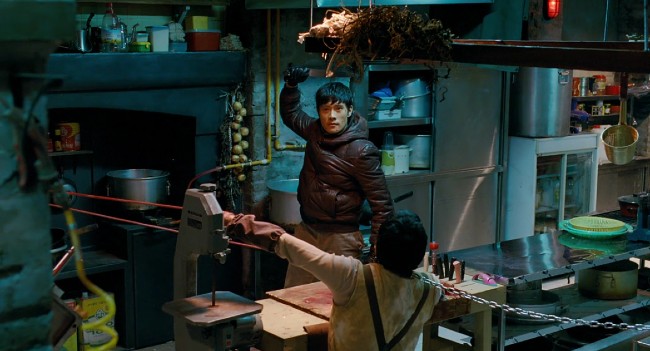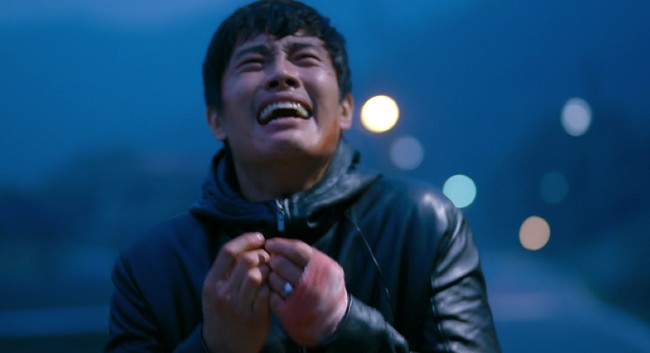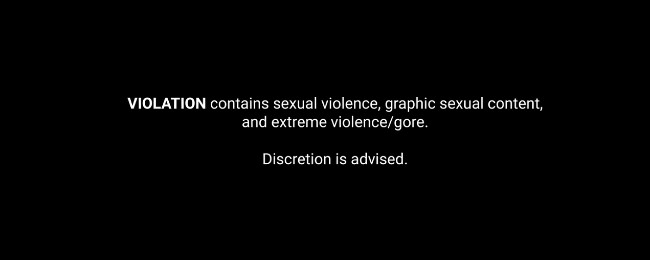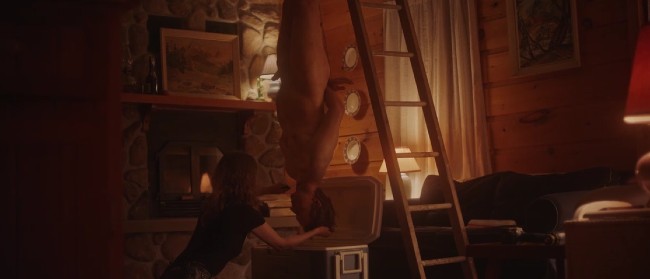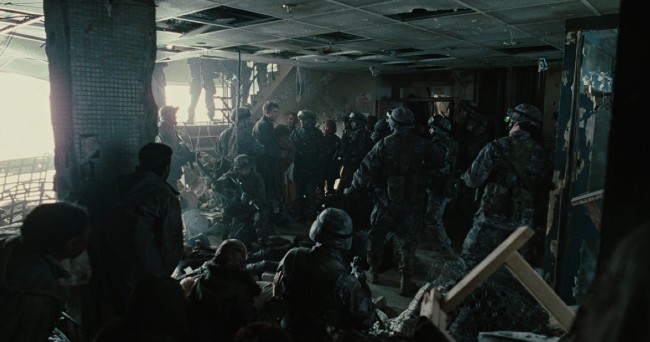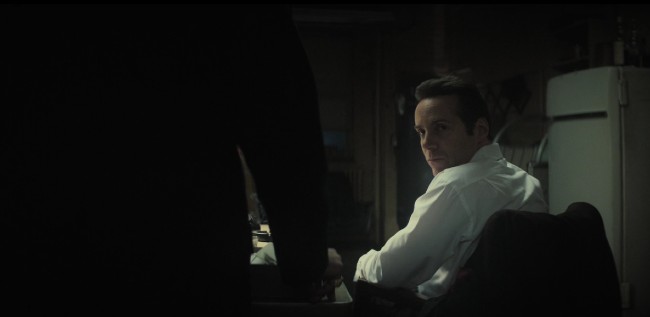The Cinema of Revenge Part Three: The Rhythm Section, I Saw The Devil, Violation
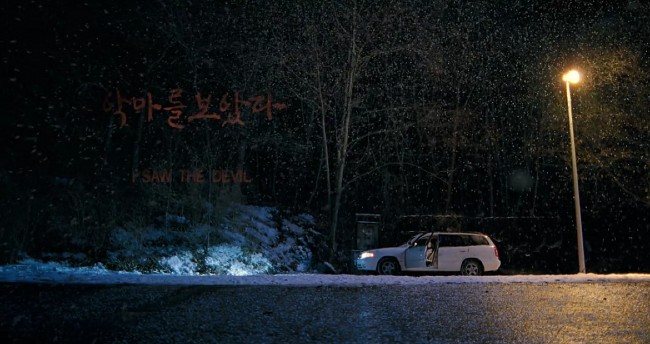
Revenge, as they say, is a dish best served cold. In the movie world it’s also served hot with blood, bullets, guns, and knives. It comes in explosions and implosions. It’s sliced and diced. Directors have made career defining movies out of revenge. Sergio Leone’s Once Upon a Time in the West is an epic Western, but at its core it’s a revenge movie. Quentin Tarantino has made one revenge fantasy after another. Revenge has been in the cinema since the start, it will be with cinema until the end.
THE RHYTHM SECTION
Early in The Rhythm Section Jude Law’s Iain Boyd calls Blake Lively’s Stephanie Patrick “typical.” He could have easily been talking about the movie, because everything about this revenge movie is typical. Director Reed Morano (I Think We’re Alone Now) set out to do something different within the revenge genre, however, the movie never meets the expectations.
Patrick’s entire family is killed when the plane they’re on explodes in midair. As a result Patrick suffers from survivor’s guilt which leads to years of drug abuse. She turns to prostitution to support her drug habit. Typical. It’s not until a journalist. Keith Proctor, finds her in a brothel she learns the real reason behind the airplane explosion. For years she believed the explosion was the result of an air malfunction. Of course it was an elaborate terrorist plot to kill one person. Typical.
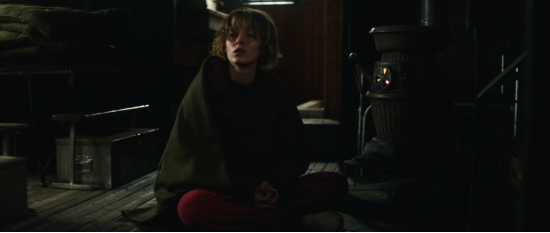
In typical fashion, Proctor lays out the entire plot and the players involved with news clippings, printouts, and other odds and ends taped neatly to a wall in his apartment. Before he’s murdered by the same terrorists, Proctor tells Patrick about Boyd. Although it’s only a name it’s enough for Patrick to find Boyd.
The Boyd character is as cardboard of a character as they come. He’s the typical shady operative seen in countless other movies. This time the shady operative is a former MI6 agent. Boyd even lives by himself in the middle of nowhere. Of course, he wants nothing to do with Patrick when he first meets her, but this wouldn’t be a movie if he didn’t agree to train her.
Her complete training is condensed into a few scenes meant to show the passage of time. However, not a lot of time could have passed because everyone Patrick wants to kill are still in the same places they were at the start of the movie and still doing the same things. No real time has actually passed, but Patrick still manages to become a super assassin.
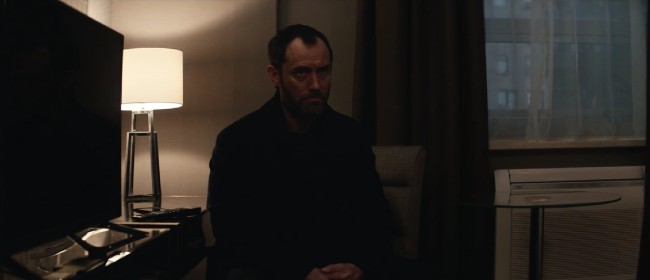
Before Boyd starts to train Patrick he forces her to go cold turkey. Reed shows us a scene of Patrick scratching her back and another scene of Patrick vomiting into a toilet. The average time for someone to detox from drugs is roughly ten days, however, it can take longer and does not include the psychological addiction even after drugs have been removed from the body’s systems. While Patrick is learning to be an assassin she’s also in the middle of withdrawals.
Several times during the movie Boyd tells Patrick “revenge isn’t worth it.” . By the end of the movie Patrick has killed those responsible for her family’s death but there is no change in Patrick. The cliches throughout the movie could almost be forgiven if there was some visible change. However, at the end of the movie we’re not sure if she’s struggling with the fact that she’s killed people, an act most normal people wouldn’t handle very well, or if she’s relieved her quest is over. The lack of any emotion one way or the other could also mean she’s planning on being a full time assassin. Any emotional response would be better than the flat not the movie ends on.
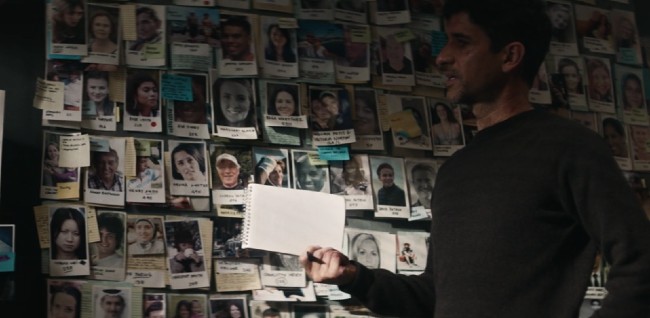
I SAW THE DEVIL
In comparison, Kim Jee-woon’s I Saw the Devil embodies the saying “Before you embark on a journey of revenge, dig two graves.” After Kim Soo-hyeon’s finance is murdered by a serial killer it sends him on a bloody crusade to exact revenge.
What makes I Saw the Devil unique among revenge driven movies are the twists. Unlike other revenge movies where the protagonist finds the antagonist and kills them in one violent act Soo-hyeon repeatedly hunts down his wife’s killer. He finds him, beats him to an inch of his life, and then lets him go only to repeat the process time and time again.
It’s difficult to say how long Soo-hyeon would have continued his repeated cycle of revenge. Everyone in his life, from his sister-in-law to concerned police officers, repeatedly ask him to stop. Every time he ignores their pleas. He’s hell bent on continuing his crusade. In another twist in an already bloody movie, Kyung-chul turns the tables to become the hunter once again which spurns Soo-hyeon to finally deliver his form of justice. In a bit of poetic justice Soo-hyeon kills Kyung-chul in front of the son he abandoned years before.
If I Saw the Devil only introduced this catch and release cycle into the revenge genre it would still be one of the best entries in the Cinema of Revenge. Except, it does more than just that. I Saw the Devil shows us the ramifications of violence.
Most movies today sidestep showing the results of violent acts. The Avengers topple buildings which kill hundreds of people, Superman cries out after he kills Zod yet he shows no remorse or responsibility for the hundreds who died during their fight. By the end of the movie Soo-hyeon has exacts his revenge and everything that has occured over the course of the movies comes crashing in on him. It’s safe to say Soo-hyeon has been irrevocably changed.
VIOLATION
A recent edition in the Cinema of Revenge is 2021’s Violation. The heavy handed title should clue audiences into what this movie is going to be about before the opening credits even start. For those not well versed in the art of subtlety Violation is a movie about the revenge a woman, Mariam, takes after she’s raped.
The bulk of the movie’s one-hundred and seven minute run time is dedicated to Miriam’s execution of a very elaborate plan to kill Dylan, her rapist, and dispose of his body. She thought of everything from draining the body of blood to spreading his ashes in a lake. It’s an ingenious plot that in any other movie may or may not have led to her arrest. In real life, the plan is so flawed she would most undoubtedly be arrested for murder.
Except in the confines of Violation being caught for murdering her brother-in-law is not what the movie is about. In fact, it’s difficult to say what this movie is about other than revenge. Due to the very limited time in the movie to flesh out characters we’re left with the impression that Miriam was never psychologically balanced and possibly had mental issues before she was raped. Very little time is dedicated to any in depth character study.
There’s no argument that she was raped because we only see the story from her eyes. However, we can never tell when she’s interacting with other characters if she’s speaking from a place of pain or from somewhere else. Her character is erratic even before the assault. Miram’s sister hints at issues Miriam has dealt with in the past. Based on the little information we are given we can’t be exactly sure if she was even raped.
Some movie goers seem to relish short movie times. There’s no issue if a director can utilize a short time run to make a complete movie. Violation is a clear case that a little more time in a movie can be a valuable asset. Directors Dusty Mancinelli and Madeleine Sims-Fewer, who also played Miriam, seem more interested in creating some sort of art piece between the acts of violence. They even find time to have Miriam confront a husband and wife who are having a fight in a hotel parking lot. The scene goes nowhere and we never see Miriam confront anyone else. The movie can be about revenge or facing down bullies, but with a short run time and random scenes the movie can’t be both.

